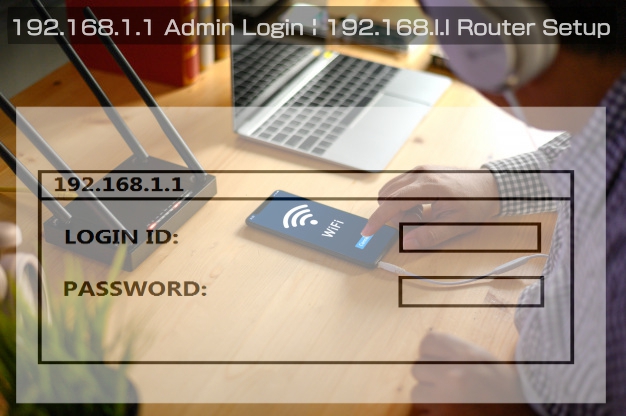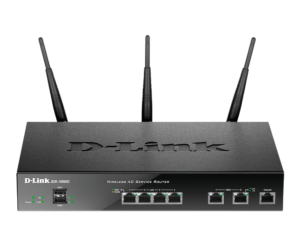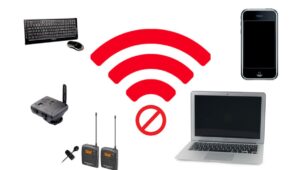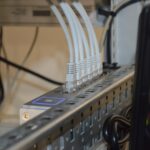192.168.1.1 is the default gateway IP address used by many wireless router manufacturers. 192.168.1.1 or whatever your router’s default gateway is, the administrative console that lets you configure your router settings. So, you can’t access your router configurations if you can’t open up or log into the 192.168.1.1 portal.
Why can’t you access 192.168.1.1 or your router’s default gateway IP address? The guide will cover all the possible reasons behind your default gateway failure. Additionally, you can take potential steps to solve the underlying issue. Let’s get started.
Common Reasons You Can’t Access 192.168.1.1
Why can’t I access 192.168.1.1? Reportedly, a lot of factors can contribute to the situation, and the following causes are the most common ones:
- A faulty Ethernet cable
- An issue with the power cable or other hardware components
- Inputting a wrong gateway IP address
- Using an invalid username or password
- A problem with the router
- IP address issues on your computer or any mobile device
- Incompatible web browser
- Banned IP address
If you can access the sign-in screen through the 192.168.1.1 IP address but can’t log into the portal, then some dedicated solutions are available, too.
6 Ways to Solve the Router Configuration Page 192.168.1.1 Accessing Issue
You might notice ‘No internet’, ‘This site can’t be reached’, ‘Unable to connect to the internet’, and similar warnings whenever you try to access the 192.168.1.1 router configuration page. The private IP address of your router can be 192.168.1.1 or anything else, depending on the manufacturer.
Type the default gateway IP address, and you might get a message as mentioned above. On the other hand, you might see the login page, but your access can be denied after entering your username and password. Here are some proven hacks that can restore access to 192.168.1.1. Or other router configuration web consoles:
1. Ensure You Connect to the Right Network
You may be trying to open up the router configuration page while being connected to a different Wi-Fi network. This situation is very common if you have multiple wireless networks around you. So, ensure you have connected your mobile device to the correct network.
2. Inspect the Device’s IP Address
Your connecting device should have the same IP address as your router IP address series. Otherwise, your mobile device can’t establish a connection to the router and, hence, the router configuration page. Typically, the DHCP service of the router assigns IP addresses to all connected devices.
So, you should properly connect your device to the router. Thus, it will get a valid IP address from the router. Let’s check out how you can test whether your Windows device uses the correct IP address:
- Open up the Search bar and type ‘cmd’ there.
- Next, open the Command Prompt console with admin privileges.
- Once the command prompt expands, type ‘ipconfig’ and press Enter.
- Check if the default gateway is the same as your router’s private IP address.
Moreover, you can execute a ping test to verify the network communication. For the ping test, type in ‘ping 192.168.1.1’ on the command line and hit Enter. Confirm that you have entered the correct wireless network password while joining the network. Additionally, you can re-enable the network adapter to get a new IP address from the router.
3. Try New Cables and Ports
Do you use Ethernet connections to establish a network between your mobile devices and the router? Then, faulty or damaged wires can trigger an issue when you try to access the 192.168.1.1 router configuration page. So, look for any signs of damage in Ethernet cables and LAN connections to find out the source of the issue.
Change the Ethernet cable if you want to restore the access. On the other hand, you can try different LAN ports on the router to connect your devices. Don’t forget to check your router’s LED lights to ensure there’s no internet connection problem. Or else you have to wait until your internet connection is up again.
4. Vindicate Your Router’s Default Gateway
Do you use the right gateway IP address to access your router’s configuration portal? Though most router manufacturers use 192.168.1.1 as the default gateway, this doesn’t mean your router has the same private IP address as theirs.
Rather than assuming the wrong IP address for your router’s web portal, you should verify the IP address. Generally, routers have their specific login IP addresses along with passkeys mentioned on their bottom side. Otherwise, you can read the user documentation or manual to find the login IP.
5. Assign an IP Address to your PC
In general, routers automatically assign IP addresses to every connected device. However, accidents can happen, and your Windows computer might not have received an IP. Fortunately, you can assign a static IP address to your Windows computer, which should be on the same series or subnet of the router IP address.
As you are interested in 192.168.1.1 router IP login, the static IP for your computer should be something like 192.168.1.x. Follow the instructions below to assign a static IP address to your Windows computer manually:
- Right-click on the Wi-Fi icon from the taskbar and choose Open Network & Internet Settings.
- Next, select the Wi-Fi option from the left pane and hit the ‘Change adapter option’ from the right-hand side.
- After that, right-click the connected Wi-Fi network and choose Properties.
- Select Internet Protocol Version 4 (TCP/IPv4) from the Networking tab and hit the Properties button.
- Now, check the ‘Use the following IP address’ circle and assign the router’s default login IP series in the IP address field. In this case, it can be 192.168.1.100 or any valid 192.168.1.x IP.
Don’t forget to do a ping test to check if the troubleshooting works.
6. Try a Different Web Browser
192.168.1.1 can still be inaccessible even though you have tried all the abovementioned solutions. Perhaps your web browser might be incompatible with the 192.168.1.1 right now. Software glitches and bad cache can trigger the problem.
So, you can use a different browser as a quick rescue. If the 192.168.1.1 or any other router configuration page remains inaccessible, try to clear the browser cache. Go to the browser menu and look for an option such as ‘Clear browsing data’ or something similar.
Once you clear the cache, try to reload the browser and check if you can access the 192.168.1.1 login IP.
Reset Your Router to its Factory Settings
If you can access the 192.168.1.1 login page but can’t log into the web admin console, reset the router. Follow the user manual to reset the router without accessing the web portal. A reset will assign the default username and password. Hence, you can sign into the router’s admin portal easily. For better results, take a backup of your router’s present configuration.







